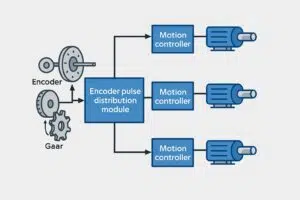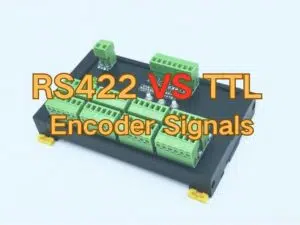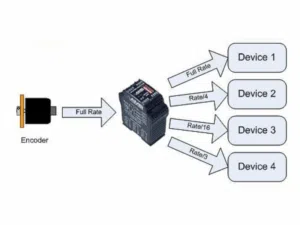No atual panorama industrial de ritmo acelerado, a procura de soluções de cablagem fiáveis e eficientes é mais crítica do que nunca. Bloco de terminais de parafuso é um componente essencial nos sistemas eléctricos, oferecendo ligações seguras e duradouras.
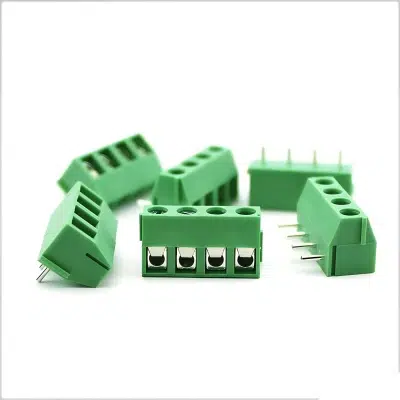
A escolha do bloco de terminais de parafuso correto é crucial para garantir a fiabilidade, segurança e desempenho a longo prazo do sistema. Este artigo irá guiá-lo através de considerações fundamentaisincluindo classificações eléctricas, opções de montagem, seleção de materiais e normas da indústria, para o ajudar a tomar uma decisão informada ao selecionar o bloco de terminais ideal para a sua aplicação.
Parte 1. Classificações e especificações eléctricas de blocos de terminais de parafuso
Ao selecionar um bloco de terminais de parafusoO primeiro e mais importante fator a considerar é a sua classificações eléctricas e especificações do fio. As classificações de tensão e corrente devem corresponder às necessidades específicas do seu sistema elétrico. Estas classificações ajudam a garantir que o bloco de terminais pode suportar a carga eléctrica sem sobreaquecer ou tornar-se um risco de incêndio.

Além disso, é essencial selecionar o bitola de fio correta para o bloco de terminais. Se o bloco não for compatível com o tamanho do fio, pode dar origem a más ligações, resistência excessiva e potencial falha. Verifique sempre as especificações do fabricante relativamente ao calibre do fio e certifique-se de que o bloco de terminais está classificado para os níveis de tensão e corrente da aplicação. Este passo é crucial para garantir que o sistema segurança e desempenho a longo prazo.
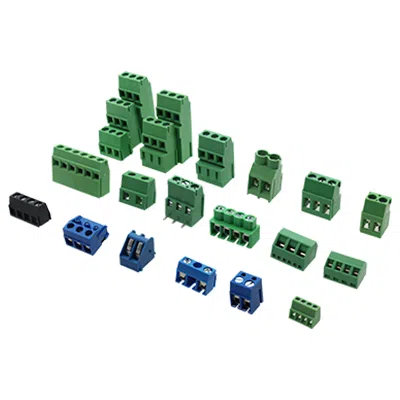
Recommended Product – Explore More from AOSI
Discover AOSI’s solutions designed for industrial automation, control panels, and power systems. Reliable performance, certified quality, and customizable options — all directly from the source factory.
View More DetailsParte 2. Tipo de montagem e dimensão de um bloco de terminais
Seleção do tipo e tamanho de montagem adequados para blocos de terminais de parafuso é fundamental para garantir uma instalação correta e um funcionamento fiável. Os estilos de montagem mais comuns incluem montagem em painel, montagem em calha DIN e montagem em superfíciecada um deles adaptado a ambientes e requisitos de sistema específicos.
Exemplo de tipo de montagem:
- Os blocos montados em calha DIN são ideais para sistemas compactos ou modulares onde o espaço é limitado.
- Os blocos montados em painéis são mais adequados para aplicações centralizadas e de alta potência.
Outras considerações importantes incluem:
- Número de pólos (terminais) necessário para o seu circuito.
- Dimensões físicas e disposição do bloco de terminais para caber dentro do invólucro, permitindo simultaneamente um acesso suficiente à cablagem.
- Facilidade de instalação e manutenção para minimizar os erros durante a configuração e a manutenção futura.
Escolher um bloco de terminais bem concebido que corresponda a estes critérios contribuirá para a segurança, simplicidade e facilidade de manutenção a longo prazo do sistema.
Parte 3. Seleção de Materiais e Segurança para Blocos de Terminais de Parafuso
A seleção de materiais é fundamental para garantir a segurança, a durabilidade e o desempenho de terminais de parafuso. A tabela seguinte apresenta as principais propriedades dos materiais, opções comuns e considerações de segurança:
|
Componente |
Opções de materiais |
Principais propriedades e benefícios |
Considerações sobre segurança e conformidade |
|
Habitação |
Poliamida (PA66), Nylon |
Elevado isolamento, resistência ao calor, retardamento da chama (por exemplo, UL94 V-0), resistência ao impacto |
Deve cumprir as normas UL, CE ou IEC para resistência à chama e força dieléctrica |
|
Bar atual |
Latão, Cobre |
Excelente condutividade, resistência mecânica, frequentemente estanhada para uma melhor resistência à corrosão |
A galvanização aumenta a durabilidade em ambientes húmidos ou corrosivos |
|
Parafuso de aperto |
Aço, frequentemente zincado |
Elevada resistência mecânica, resistência à corrosão |
Garante ligações estáveis e fiáveis ao longo do tempo |
|
Requisito geral |
|
Resistência ao calor, aos produtos químicos e ao stress ambiental |
As certificações (UL, CE, IEC) garantem a conformidade com os regulamentos de segurança regionais |
✅ Recomendação: Selecionar sempre blocos de terminais que contenham as respectivas caraterísticas de segurança certificações (UL, CE, IEC) para garantir a conformidade com as normas internacionais de segurança operacional e fiabilidade a longo prazo em ambientes industriais.
Parte 4. Instalação e considerações ambientais para blocos de terminais aparafusados
A instalação correta e a adequação ambiental são essenciais para garantir a segurança e a fiabilidade do bloco de terminais de parafuso. As diretrizes seguintes descrevem as melhores práticas fundamentais:
Requisitos de instalação
- Respeite sempre as normas de instalação específicas aplicáveis ao seu sistema elétrico.
- Comprimento de descasque do fio: Siga as recomendações do fabricante para evitar mau contacto ou curto-circuitos.
- Definições de binário: Utilize uma ferramenta de binário calibrada para apertar os parafusos com o valor especificado - o aperto excessivo ou insuficiente pode resultar em falha da ligação.
- Acessibilidade: Assegurar espaço suficiente para ligar, desligar e manter os fios.
⚠️ Uma instalação incorrecta pode originar ligações pouco fiáveis, falhas no sistema ou riscos de segurança, como sobreaquecimento ou arcos voltaicos.
Condições ambientais
1、Selecione blocos de terminais projetados para resistir ao ambiente de funcionamento:
- Humidade elevada ou humidade: Escolher blocos com índices IP elevados e materiais resistentes à corrosão.
- Temperaturas extremas: Verificar a temperatura nominal dos condutores e do isolamento.
- Exposição química: Utilize materiais de alojamento quimicamente resistentes (por exemplo, plásticos robustos ou modelos selados).
2 、 Procure certificações como UL, IEC ou ATEX que confirmem a adequação para condições desafiadoras.
✅ Recomendação: Utilizar sempre blocos de terminais com classificação ambiental e retardadores de chama em ambientes agressivos. O cumprimento das normas garante um desempenho a longo prazo, minimiza a manutenção e reduz o tempo de inatividade do sistema.
Parte 5. Bloco de terminais de parafuso com certificação e normas
Certificações e normas do sector são vitais para a escolha de um bloco de terminais de parafusopois indicam a qualidade, segurança e fiabilidade do produto. Normas reconhecidas internacionalmente, como a conformidade com UL, CE, IEC e RoHS, garantem que o bloco de terminais cumpre rigorosos testes de desempenho, segurança eléctrica e impacto ambiental. Certificação ULgarante, por exemplo, que o bloco de terminais foi submetido a ensaios de resistência às chamas e de tolerância à temperatura.
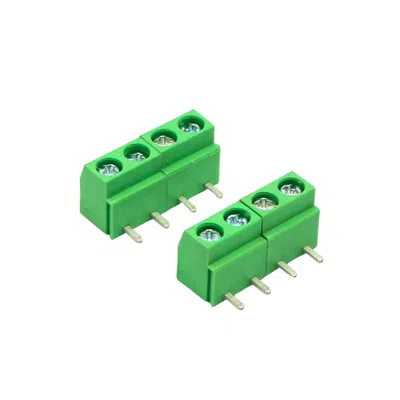
A marcação CE garante que o bloco está em conformidade com Regulamentação europeia em matéria de segurança e saúde. Ao selecionar um bloco de terminais, verifique sempre se este possui as certificações relevantes para a sua região ou indústria. Estas certificações garantem que o produto é seguro, eficiente e adequado para a sua aplicação, e podem também ser fundamentais para cumprir os requisitos de requisitos legais ou de seguros para os seus sistemas eléctricos.
Conclusão
Selecionar o caminho certo bloco de terminais de parafuso envolve a consideração de classificações eléctricas, tipos de montagem, qualidade do material e caraterísticas de segurança. Assegurar que o bloco cumpre as especificações eléctricas, a instalação e os requisitos ambientais garante uma solução de cablagem segura e eficiente. A escolha de produtos certificados acrescenta valor e segurança a longo prazo. Ao avaliar estes factores, é possível otimizar o desempenho do sistema e aumentar a fiabilidade em aplicações industriais e comerciais.
Um bloco de terminais bem escolhido aumentará a segurança, a eficiência e a longevidade dos seus sistemas eléctricos. Contacte-nos para saber mais pormenores sobre os nossos terminais de parafuso para os seus projectos.

